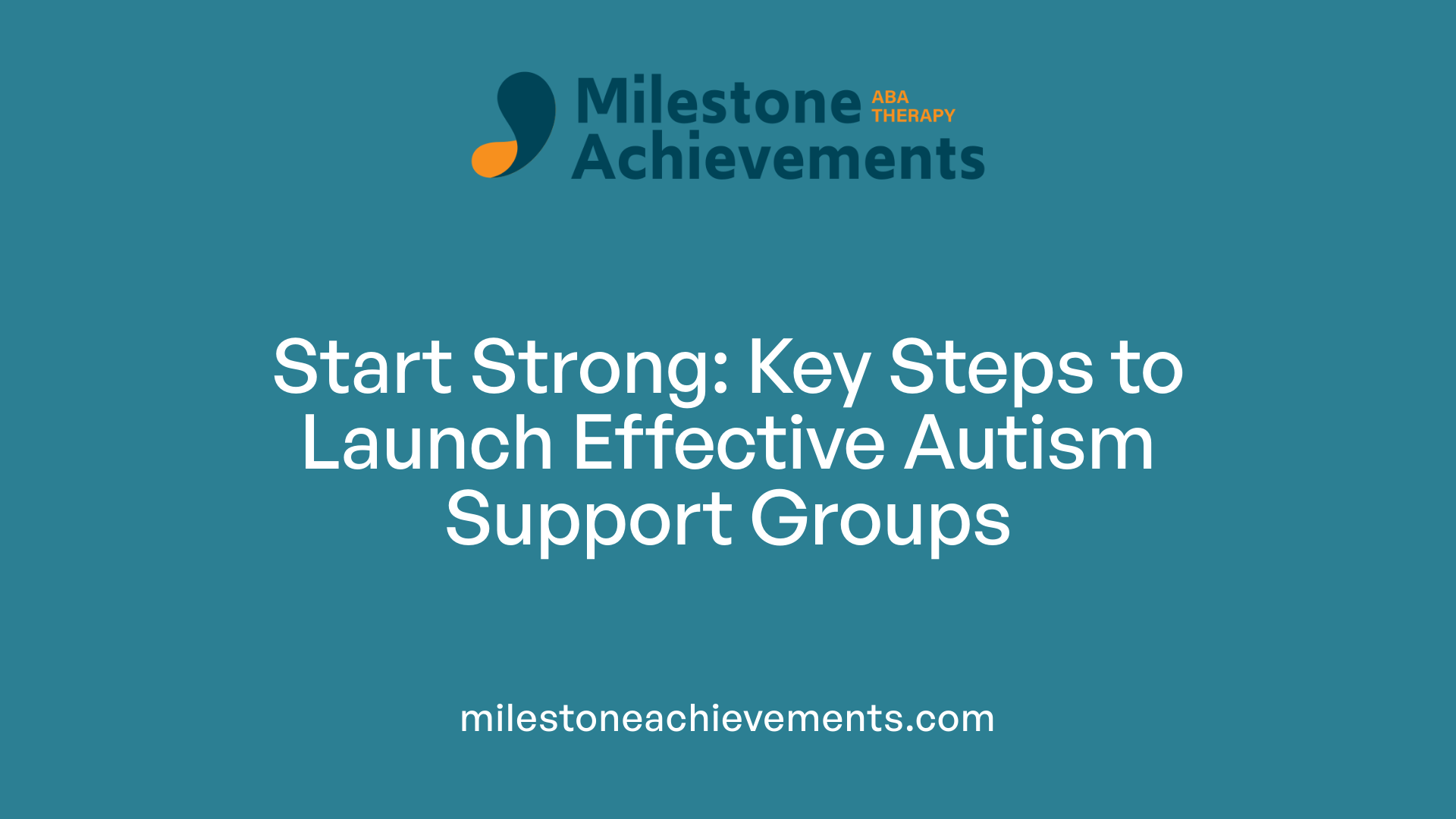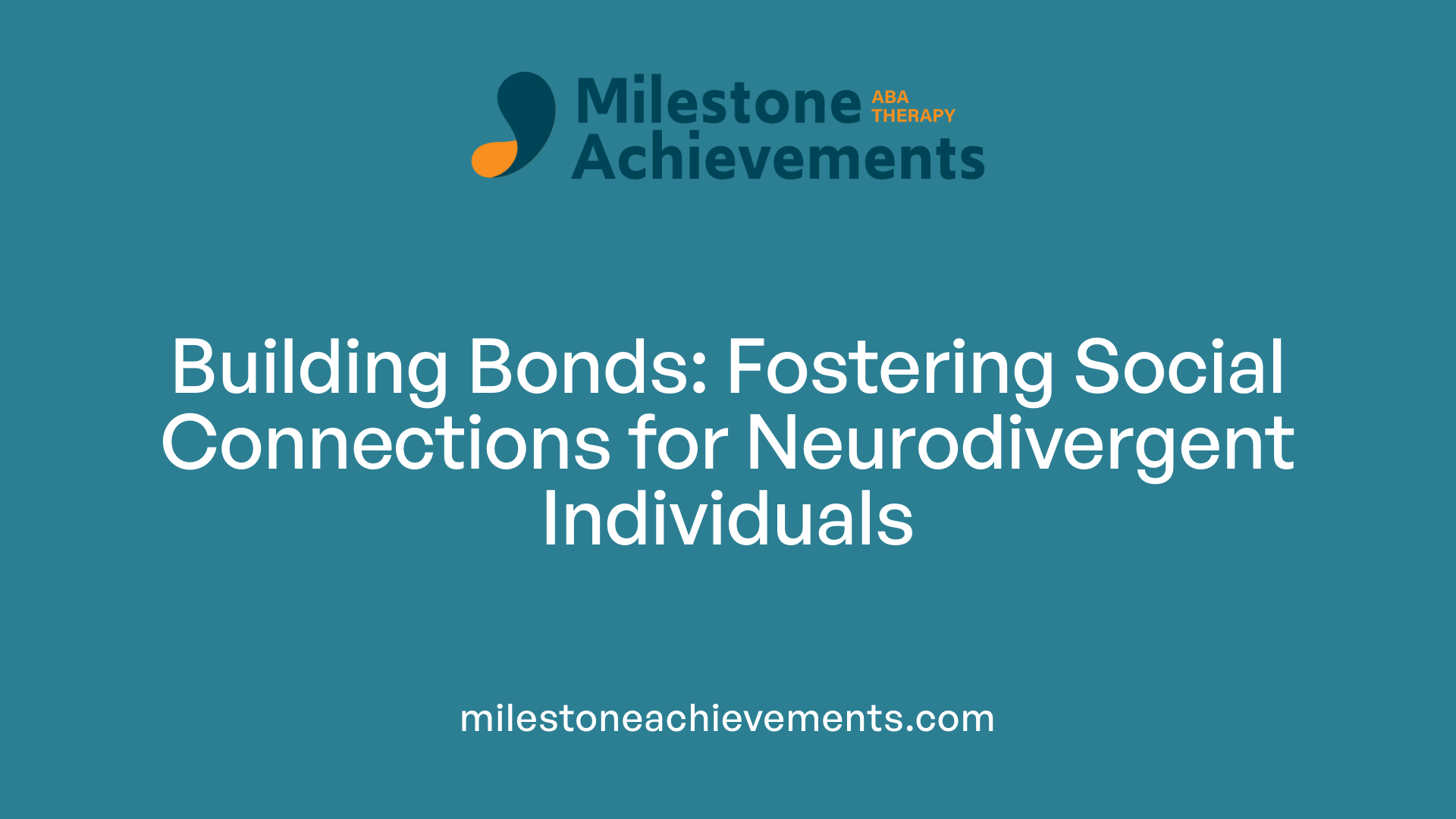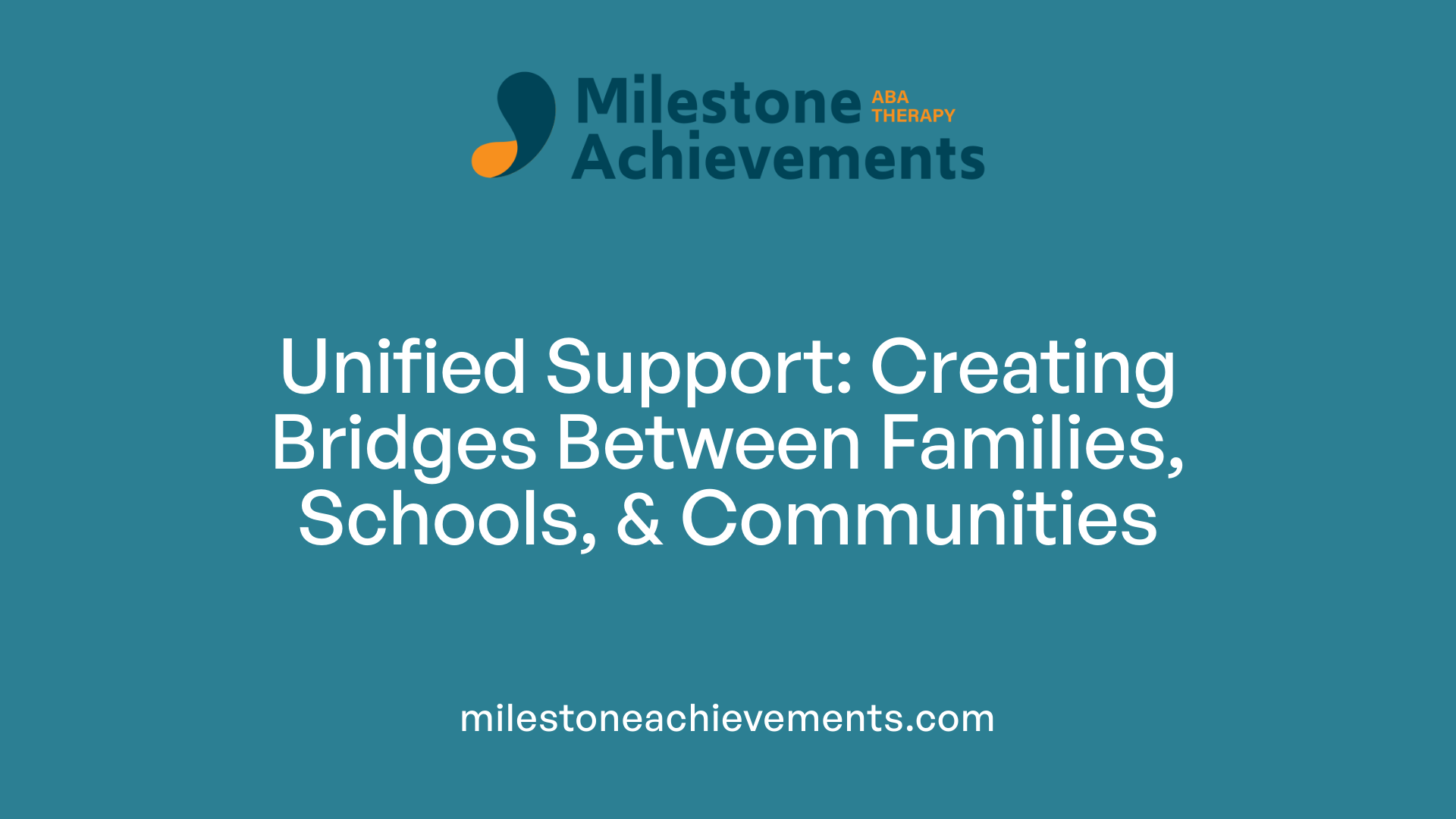
Building a Support Network for Autism
Creating Connections and Fostering Inclusion
Understanding the Foundations of Autism Support Networks
Building a robust support network for individuals with autism is essential for promoting well-being, fostering independence, and ensuring inclusive community participation. Support systems encompass various resources, from familial and social connections to community organizations and professional services. This article explores strategies for establishing effective support networks, the roles of community and online resources, and ways to enhance social connectedness for people with autism across all ages.
The Structure of a Typical Autism Support Network

What does a typical social support network for autism look like?
A support network for adults with autism is diverse and multi-layered, aimed at enhancing social, emotional, and practical well-being. It generally includes family members, friends, co-workers, and significant others who serve as primary sources of emotional and instrumental support.
Beyond immediate social circles, community organizations play a vital role. These groups often provide specialized services such as advocacy, education, and access to therapy. For example, organizations like Autism Speaks and the Autism Society offer resources, community events, and directories of local services, including diagnostic assessments, educational programs, and residential options.
Support networks also encompass peer groups and community events that foster social interaction, shared experiences, and mutual support. These groups help reduce feelings of loneliness and provide a platform for exchanging coping strategies.
Online communities and social media platforms further expand support options by connecting individuals with autism and their families across geographic boundaries. These platforms offer accessible forums for sharing resources, advice, and emotional support.
For families, support often starts with connecting through local or online parent groups where they can learn about resources like support plans, in-school therapies, and family activities. Support from healthcare providers including therapists and educational consultants adds another layer, providing guidance and ensuring holistic care.
Support networks are most effective when they are intentionally built — starting with identifying specific needs, mapping existing resources, and then reaching out through interest-based groups, volunteering opportunities, or support programs. Developing self-advocacy skills and maintaining diverse relationships help sustain these networks.
In summary, a typical autism support network integrates personal relationships, community services, online platforms, and advocacy groups to create a comprehensive support system. This web of resources enhances social inclusion, emotional resilience, and overall quality of life for individuals with autism.
Connecting Families to Community Resources and Support Organizations

What strategies can help connect families and individuals affected by autism to community resources and support organizations?
Building a strong community support network starts with awareness and proactive engagement. Families should begin by researching local organizations such as Autism Speaks, which provides comprehensive resource guides and an Autism Response Team ready to assist families in navigating available services.
Participating in community events, workshops, and support groups can foster meaningful social connections and emotional support. These gatherings offer a platform to share experiences, learn about new resources, and build relationships with others facing similar challenges.
Utilizing online resources, telehealth services, and culturally responsive information sharing broadens access to support, especially for those in rural or underserved areas. Many organizations offer virtual support groups, webinars, and digital toolkits to ensure no one is left behind.
Early intervention is crucial. Connecting families promptly with services such as speech therapy, behavioral interventions, and caregiver-mediated programs can promote development and well-being.
Furthermore, collaborating with healthcare providers, schools, and advocacy organizations helps ensure families are aware of and can access a wide range of services—including respite care, educational supports, and community activities. This comprehensive approach strengthens the support system around individuals with autism, helping them flourish within their communities.
Role of local and national organizations
Local and national organizations serve as vital hubs for resources, advocacy, and education. They help families understand available support options and often provide direct services or facilitate connections to service providers.
Examples include local autism societies, support clinics, and national nonprofits like Autism Speaks. These groups often organize training sessions, awareness campaigns, and community-building events.
Importance of early intervention and collaboration
Early diagnosis and timely intervention lay the foundation for successful development and social integration. Connecting families to services early ensures children get the support they need during critical developmental periods.
Collaboration among families, healthcare providers, educators, and community organizations enhances resource pooling and creates a cohesive support system. This teamwork ensures that individuals with autism receive personalized care, educational accommodations, and social opportunities tailored to their needs.
Fostering such partnerships and prioritizing early, accessible intervention ultimately build resilient communities where neurodivergent individuals can thrive.
Launching and Sustaining Support Groups for Autism

What are the key considerations when starting an autism support group?
Starting an autism support group involves careful planning to ensure it is effective and inclusive. The first step is to clearly define the purpose of the group—whether it’s offering emotional support, sharing resources, or providing education. Selecting a descriptive and welcoming name helps set the tone.
Next, consider membership diversity to serve the needs of different community segments, including parents, caregivers, autistic adults, or specific cultural groups. Logistics such as suitable meeting times, accessible locations, and online options are crucial for participation.
Creating a safe, welcoming environment encourages open communication and peer support. Clarifying the group's objectives guides the formation process and helps attract members who will benefit from and contribute to the group.
Overall, thoughtful planning around purpose, membership, and logistics sets a strong foundation for a successful autism support group.
Importance of purpose, membership, and logistics
A support group's clarity of purpose makes it easier to attract the right members and organize effective activities. Whether focusing on emotional support or resource sharing, a clearly defined goal guides every meeting.
Membership diversity enriches the group by bringing different perspectives and experiences. It’s essential to consider cultural, age, and individual needs to foster inclusivity.
Logistics such as location, schedule, and virtual accessibility influence participation levels. Accessible venues and flexible timing can help reach more families and autistic individuals.
Balancing these aspects ensures the group remains relevant, inclusive, and sustainable over time.
Strategies for maintaining engagement
Keeping members involved requires ongoing effort. Regular meetings, whether in person or online, create routine and stability.
Offering a mix of activities—discussions, guest speakers, resource sharing—keeps sessions engaging. Celebrating milestones and sharing success stories can boost morale.
Encouraging members to share feedback helps tailor activities to meet evolving needs. Building a sense of community through informal interactions and social events fosters stronger bonds.
Additionally, providing resources such as workshops, training, and access to professional support maintains the group’s value. Recognizing members’ contributions and practicing gratitude reinforce commitment.
Establishing a leadership structure with dedicated coordinators or facilitators supports continuity and organization. Over time, these strategies cultivate a vibrant, resilient support network for those impacted by autism.
Developing Social Connectedness and Support for Neurodivergent Individuals
 Creating a strong, inclusive environment is essential for supporting neurodivergent individuals. This involves designing spaces and activities that consider sensory sensitivities and communication needs. Examples include sensory-friendly events, clear communication practices, and accessible services. Such environments help individuals feel safe and understood, laying the foundation for meaningful social connections.
Creating a strong, inclusive environment is essential for supporting neurodivergent individuals. This involves designing spaces and activities that consider sensory sensitivities and communication needs. Examples include sensory-friendly events, clear communication practices, and accessible services. Such environments help individuals feel safe and understood, laying the foundation for meaningful social connections.
Building on individual goals is a crucial step. Support networks should start with identifying what each person wants to achieve in social or community settings. This can include participating in support groups, joining interest-based clubs, or engaging in vocational opportunities. Connecting with community resources like local groups, online forums, and professional services—such as therapists and educational consultants—enhances access to support.
Fostering community participation is beneficial for emotional well-being and creating a sense of belonging. Active involvement in community activities, both in person and online, helps decrease feelings of isolation. Support groups, such as those offered by Autism Speaks or organizations like Asperger / Autism Network (AANE), provide safe spaces for sharing experiences and strategies.
An effective support network incorporates various types of social support. Emotional support offers empathy and trust, instrumental support helps with daily tasks, informational support provides advice, and appraisal support fosters self-awareness. Developing skills like self-advocacy enables neurodivergent individuals to express their needs and build lasting relationships.
Building a support network takes time and patience. Strategies include regular check-ins, expressing gratitude, engaging in low-pressure social activities, and joining interest-based groups or volunteering. Focusing on quality over quantity of connections helps prevent burnout and ensures a diverse, resilient support system.
Ultimately, promoting understanding and acceptance is essential across all societal levels. Patience, compassion, and continuous nurturing of community ties foster resilience, reduce social isolation, and improve overall well-being for neurodivergent individuals.
Fostering Collaboration Between Families, Schools, and Communities

How do I create an effective support system that involves family, school, and community resources for autistic individuals?
Building a well-rounded support network for autistic adults and children requires fostering collaboration among families, schools, and community organizations. This integrated approach ensures that supports are consistent, comprehensive, and tailored to each individual’s needs.
One of the first steps involves promoting open and ongoing communication. Families, educators, therapists, and community members should share insights about the person’s strengths, challenges, and goals. This shared understanding helps in creating cohesive strategies and avoiding conflicting approaches.
Establishing shared goals is essential. For example, focusing on enhancing social skills, communication, or independence allows all parties to work towards common objectives. Utilizing tools like social narratives and sensory strategies can aid in implementing these goals across different environments.
Active family involvement is crucial. When families are engaged in decision-making and informed about available resources—such as local support groups, therapy options, and community activities—they can advocate effectively and facilitate smoother transitions between settings.
Community programs and events can play a pivotal role. Support groups, recreational activities, and local workshops not only provide social opportunities but also strengthen the support network. Encouraging participation from community members promotes a culture of acceptance and inclusiveness.
Resources like the School Community Tool Kit can assist educators and families in coordinating efforts, ensuring support is consistent both at school and outside. Individualized plans, such as IEPs and transition plans, should incorporate input from all stakeholders, reflecting the person’s evolving needs.
Involving community organizations in initiatives such as peer mentoring, vocational training, and social skill groups creates additional layers of support. These collaborations expand the network, fostering resilience, independence, and social integration.
By prioritizing teamwork, understanding, and shared commitment, families, schools, and communities can create a robust support system that supports the growth and well-being of autistic individuals across all areas of life.
The Path Forward: Sustaining Support and Promoting Inclusion
Building a support network for autism is a continuous, collaborative effort that requires dedication, understanding, and strategic action. Through connecting families, fostering inclusive environments, leveraging community resources, and promoting ongoing education and advocacy, we can create a society where autistic individuals thrive with dignity and purpose. Supporting emotional well-being, dispelling myths, and strengthening social bonds are vital steps toward an inclusive future where everyone feels valued and understood.
References
- [PDF] Creating Support Systems for Adults with ASDs
- Finding your community | Autism Speaks
- Strengthening Support Networks for Parents and Autistic Children
- Building a Support Network: Tips for Parents of Children with Autism
- AANE Homepage - AANE
- Building an Autism Support Network for Your Loved One - Waypoints
- How To Build A Support Network: A Guide For Neurodivergent ...
- Autism in the classroom: Strategies for success
- Working with Families of Children with Autism Spectrum Disorder
- Creating a Support System: Helping your Family and Community ...


Partner with us on your child's journey
Milestone Achievements offers evidence-based ABA therapy to help children with autism reach their full potential. Together we’ll set meaningful goals and celebrate progress every step of the way.
Start ABA Services Today





